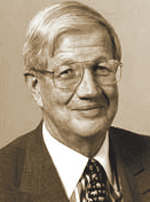|  
Global
Classrooms Teach Power of Peace
by
Michelle Accorso
Created
in 1995, Global Classrooms’ main objective is to educate children
from grades 612 about other cultures and ideas around the world.
The United Nations Association of the United States (UNA/USA)
spearheaded by Lucia Rodriguez and Ambassador Bill Luers has
joined Model U.N. in an effort to teach students the skills
and attitudes necessary for living in an increasingly diverse
society.
Model
United Nations is a well-known organization created to aid
in teaching students about how the U.N. works through role-playing.
In Model U.N., students step into the shoes of ambassadors
to debate current issues on the organization’s vast agenda.
The student “delegates” in Model U.N. prepare draft resolutions,
plot strategy, negotiate and compromise with others, resolve
conflicts, and navigate the U.N.’s rules of procedure—all in
the interest of mobilizing “international cooperation” to resolve
problems that affect the entire global community.
The
role Global Classrooms has taken differs from Model U.N. in
the sense that it teaches children how to live in a diverse,
ever-changing world without role-playing. Its main focus is
not to teach children how to play a political role, but instead
a humanistic one, in the hopes of creating a peaceful world.
At
a recent Global Classrooms National Advisory Board Meeting,
plans for the future of this program were discussed in the
hopes of implementing the best strategies. There are many elements
that play important roles in making Global Classrooms a successful
and useful tool. Willie Cade, President and CEO of PCs for
Schools (www.pcforschools.org)
explained how his company takes dated computers and refurbishes
them for use in schools. “We’re attempting to bridge the digital
divide nationally,” Cade stated, “The goal within five years
is to have every child, enrolled in school in the United States,
supplied with technology in the home. As of now, approximately
sixty five percent of homes have computers.” Cade expressed
the need to supply all families with Internet access, despite
income. With donations of old computers and Cade’s company
refurbishing them, the only real problem lies in the cost of
shipping. The reason why technology is such an important issue
is because without it kids are unable to connect with students
from other countries. Furthermore, technology offers the ability
for Global Classrooms to gain a larger audience.
The
UNA student alliance provides four to five day teacher training
for those whose students are interested in a program that supports
global consciousness. Part of the training involves pre and
post-tests that are to be distributed within the classroom.
The tests do not count towards any grade average and the scores
are kept completely anonymous. They are simply created so that
Model U.N. and UNA/USA can gain a basic knowledge of how much
the average student knows about global relations. Some examples
of the questions asked are who is the current secretary-general
of the United Nations and please circle the five permanent
members of the Security Council (twenty choices are given).
The test results indicated that students and teachers are frequently
wrong. The conclusion is that we simply aren’t educated enough
about global issues. Often, students have neglected the most
fundamental knowledge of all, knowledge of the tools needed
for a peaceful and secure future. As Professor Nel Noddings
of Stanford University stated in a recent article titled “Children
Build a Culture of Peace in a Complex World” in Education
Update (September 2003, Vol. IX, #1), “I think every course
should incorporate teaching peace. Before I did my graduate
work in philosophy I was a math teacher and if it can be done
in math, it can be done anywhere. You have to put a high priority
on it.”
Fortunately,
priority is exactly what UNA/USA is putting on this matter.
Currently UNA/USA is in the process of revising its three to
five year strategic plan. It plans to spread Global Classrooms,
instituting it in twelve cities over the next three to five
years. UNA/USA also hopes that the Global Classrooms program
will, in essence, become “self-promoting,” growing on account
of its own momentum and success.#
For
a student assessment package and more information about Global
Classrooms call 212-425-8833, fax 212-480-2176 or visit www.MetisAssoc.com.

Education
Update, Inc., P.O. Box 1588, New York, NY 10159.
Tel: (212) 477-5600. Fax: (212) 477-5893. Email: ednews1@aol.com.
All material is copyrighted and may not be printed without express consent of
the publisher. © 2003.
|
